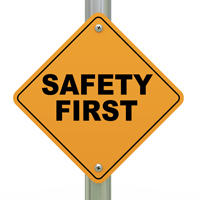Right Furnace Sizing: It's Fundamental for Comfort, Savings
When you're choosing a new heating system, the most important step is the furnace sizing process. It involves a thorough analysis of your home to find the right Btus (British thermal units) so that you avoid installing a system that's too big or too small.Heating equipment that's too large will short cycle, which means it runs in short spurts and shuts off quickly, leaving you chilled between cycles. This drives up your energy bills, increases the wear and tear on the equipment and can cause rust in the heat exchanger, which may prompt an early furnace replacement.One that's too small will leave you cold when the weather is exceptionally cold, and it will run continually, increasing energy bills and wear of all the components.Your contractor should use software tools called Manuals J, D and S to select the best size for your home before you select the energy efficiency of the system. The inputs include your home's energy efficiency, its cubic footage, floorplan layout and your lifestyle.The result of this furnace sizing exercise will yield the Btus you need, and from there, you can move onto selecting the AFUE (annual fuel utilization efficiency). The minimum you can purchase is 80, and the ratings go as high as 98. The AFUE indicates how much of the fuel the system actually uses for heat. In the case of an 80 AFUE system, it uses 80 percent and wastes the other 20 percent.If your home needs 80,000 Btus of capacity and you select a furnace with an 80 AFUE, it means that you'll need a furnace that has a capacity of 96,000 Btus. By selecting a system with a 90 AFUE, you'll only need a system with 88,000 Btus. Selecting a more efficient system will cut your energy bills each time it turns on.The experts at Air Assurance can help you with furnace sizing and selecting the best AFUE for the short and long term. Please contact us to learn more. We've provided outstanding HVAC services for the Broken Arrow area for nearly 30 years.Normal0falsefalsefalseEN-USX-NONEX-NONE/* Style Definitions */table.MsoNormalTable{mso-style-name:"Table Normal";mso-tstyle-rowband-size:0;mso-tstyle-colband-size:0;mso-style-noshow:yes;mso-style-priority:99;mso-style-parent:"";mso-padding-alt:0in 5.4pt 0in 5.4pt;mso-para-margin:0in;mso-para-margin-bottom:.0001pt;mso-pagination:widow-orphan;font-size:10.0pt;font-family:"Calibri","sans-serif";}
Our goal is to help educate our customers in the Tulsa and Broken Arrow, Oklahoma area about energy and home comfort issues (specific to HVAC systems).
Image courtesy of Shutterstock









